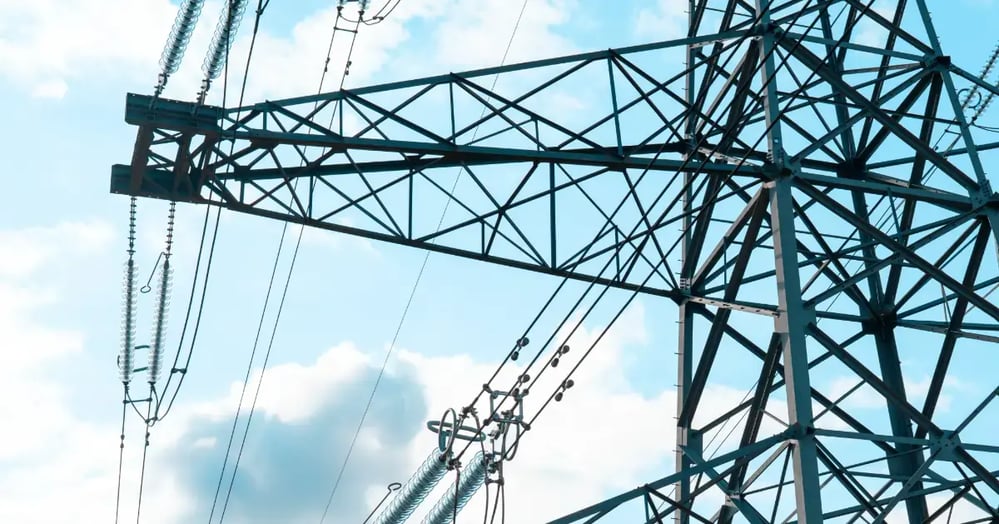What is an Embedded Electricity Network?
by Team Tradify, September 25, 2024

Table of Contents
Embedded electricity networks are private systems used to distribute electricity within multi-tenant areas. Popular within apartment blocks, shopping centres or retirement villages, they're a centralised approach to distributing electricity throughout a linked community. They're usually owned and operated by a property owner or manager who buys electricity from a distributor and then provides it to the tenants. Embedded electricity networks come with unique challenges for the electricians who work on them, with key differences compared to residences connected directly to the national grid.
Looking for the best tool for your electrical business? Try Tradify free for 14 days!
Low on time? Skip ahead!
- The differences between working on an embedded electricity network and the national grid
- The regulations for an embedded electricity network in Australia
- Typical jobs an electrician might handle on an embedded network
1. The differences between working on an embedded electricity network and the national grid.
As an electrician, servicing a home or area covered by an embedded electrical network is different to a residence connected to the regular national grid. With a standard grid connection, each residence has its direct link to the national grid via a local electricity distribution company of their choice. Any issues relating to this connection lie with the provider, while an electrician's role would focus on issues within the residence. You won't have to worry about the broader distribution network, as that is handled by the local utility.
In an embedded network, you are dealing with a private electrical system, with unique rules and regulatory compliance. The site typically has a single connection to the main grid, and from there, electricity is distributed among the residents. You may be required to service internal electrical systems, meters, or sub-meters which could impact all the properties on the grid, repairs within an individual property, or ensure the entire network complies with safety standards and the local grid's technical requirements. You might also deal with shared electrical systems, like those for common areas such as communal kitchens, bathrooms or lobbies.
One of the biggest differences between a private and an embedded system is who an electrician would answer to. In a normal set-up, the owner of the residence is your only real port of call. In an embedded system, you would likely need to coordinate with a site operator, property manager or external manager. as well as individual tenants.
2. The regulations for an embedded electricity network in Australia
Working in embedded networks requires knowledge of specific regulations, including the rules for network exemptions, customer rights to choose retailers, and ensuring they meet the National Electricity Market (NEM) compliance for new installations or upgrades.
In Australia, embedded networks are subject to their own specific rules and regulations. These rules are set by the Australian Energy Regulator (AER) and are governed by the National Electricity Rules (NER). The AER oversees embedded network operators to ensure that customers get the same rights as Australians who buy their energy from a national provider. Electricians working on embedded networks would likely need to be familiar with the specific regulations and requirements of these networks, as set out by the regulatory bodies.
3. Typical jobs an electrician might handle on an embedded network
Tenants in an embedded network can choose whether to stay with the network operator for their electricity supply or switch to an external energy retailer. Regardless of their choice, it is likely they will still be required to pay a network charge to the property owner. If a tenant wants to switch providers, a typical task for electricians may involve ensuring their metering setup is compatible with the new distributor's requirements.
Embedded networks involve sub-metering systems and more connections among a connected group. This comes with a few unique difficulties, such as extra regulations and privacy laws. Some jobs unique to embedded electrical networks include:
Individual tenant repairs and maintenance
- Sub-meter installation and maintenance
- Installing, configuring, and maintaining sub-meters for individual tenants.
- Ensuring these sub-meters meet compliance with Australian regulations.
- Tenant switch requests
- Helping tenants who wish to switch from the embedded network to an authorised external energy retailer or direct link to the national grid.
- Managing metering upgrades and ensuring the tenant's meter is compatible with the external network.
- Customer premises repairs
- Dealing with any electrical faults or upgrades related to customer-owned parts of the embedded network (e.g., specific meters, tenant wiring).
Network repairs and maintenance
- Energy usage audits
- Conducting energy usage assessments for tenants and providing recommendations for energy efficiency improvements within the embedded network infrastructure, including sustainable energy alternatives.
- Billing and metering troubleshooting
- Diagnosing issues with sub-meter readings or billing problems within the embedded network’s infrastructure.
- Load balancing within the network
- Ensuring that the internal distribution of electricity is balanced properly to avoid overloading circuits, especially in larger residential or commercial complexes.
- Network infrastructure management
- Maintaining and repairing the private electrical distribution system within the property, including cabling and switchboards that distribute electricity across individual properties or tenants.
Ready to organise your business?
Sign up for a 14-day free trial. No credit card required. No commitment. Or pop over to one of our live demo webinars to see Tradify in action.
Related articles

How To Keep Your Trade Business Running When You’re on Holiday

Digital Marketing for Small Businesses + Free Marketing Plan

5 Great Gift Ideas For Tradies
Give Tradify a go for free!
Save 10+ hours/week on business admin with the highest-rated job management software for tradespeople.
With free one-on-one training and phone support, it's never been easier to get started.




